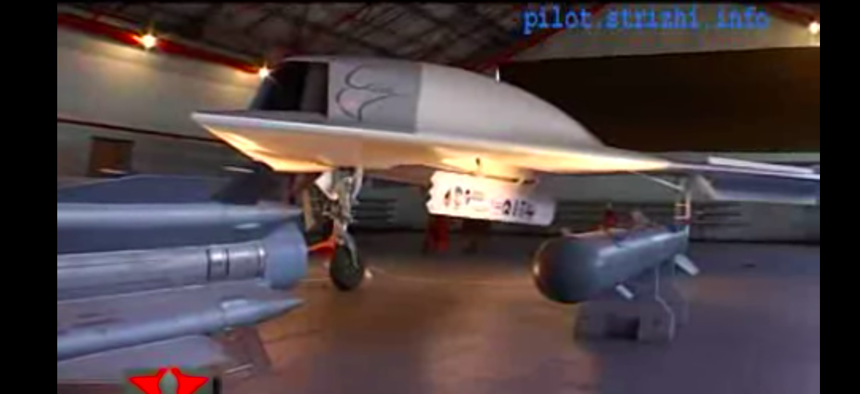
Video about the first Russian UCAV (unmanned combat air vehicle) the MiG SKAT "Manta Ray" including their development, weapons, systems and technology. Video about the first Rus TASS
This Stealthy Drone May Be The Future of Russian Fighter Jets
Russian industry sources called this heavy armed stealth drone a prototype for their sixth-generation aircraft.
A massive, 22-ton armed drone to be flight-tested later this year will be the model for Russia’s sixth-generation fighter jet, according to state media.
Dubbed Okhotnik, or Hunter, the strike-and-reconnaissance drone — roughly the size of a U.S. Air Force F-15 — is designed to have a top speed of 372 mph, a maximum range of 2,175 miles, and a payload of up to two tons, TASS reported July 20. As for the next-gen jet:
“First of all, it should be unmanned and capable of performing any combat task in an autonomous regime,” a Russian industry source told TASS. “In this sense, Okhotnik will become the prototype of the sixth-generation fighter jet.”
The source added that weapons firing would remain a human decision.
In 2014, Air International described the Hunter as Russia’s “primary tactical aviation programme for the next decade after the completion of the Su-57 fifth-generation fighter.”
But the drone is far slower than the 1,500-mph Su-57 — so it’s unclear exactly how it will prove to be a prototype beyond having a high degree of autonomy.
“Sounds like Russia wants everything to be included into the new design at once,” said Sam Bendett, a researcher at the CNA Corporation and a member of CNA's Center for Autonomy and AI. “In reality, they will probably have to compromise, selecting more realistic qualifications for the new aircraft. Most importantly, this will be an expensive endeavor, further pushing Russian designers and the Ministry of Defense to be more selective in approving the final aircraft specs. However, some qualifications, like optional manning, autonomy and some form of artificial intelligence will probably be included.”
Bottom line, said Bendett: “Ohotnik is barely flying yet and some time will pass before it becomes an operational variant. Nonetheless, this unmanned aerial vehicle and Russia's future combat aircraft plans offer a glimpse into Moscow's thoughts on future warfare.”
Whatever else is on it, and whatever form it takes, Russia’s next-generation fighter jet will likely include radio-photon radar, an experimental new sensor that uses microwave energy and optical lasers to find objects that conventional radar would miss — or at least that’s how Russian military sources are describing it in open press. “The radio-photonic radar will be able to see farther than existing radars in our estimates. And, as we irradiate an enemy in an unprecedentedly wide range of frequencies, we’ll know its position with the highest accuracy and after processing we’ll get an almost photographic image of it: radio vision," Vladimir Mikheyev, an official with Russia’s Radio-Electronic Technologies Group, told Tass last July.
Mikheyev went on to describe a myriad of direct energy and electromagnetic weapons that might be incorporated onto the craft.
Additional elements of the craft will emerge from the Su-57, which made its debut over Syria in February, some two years late.
